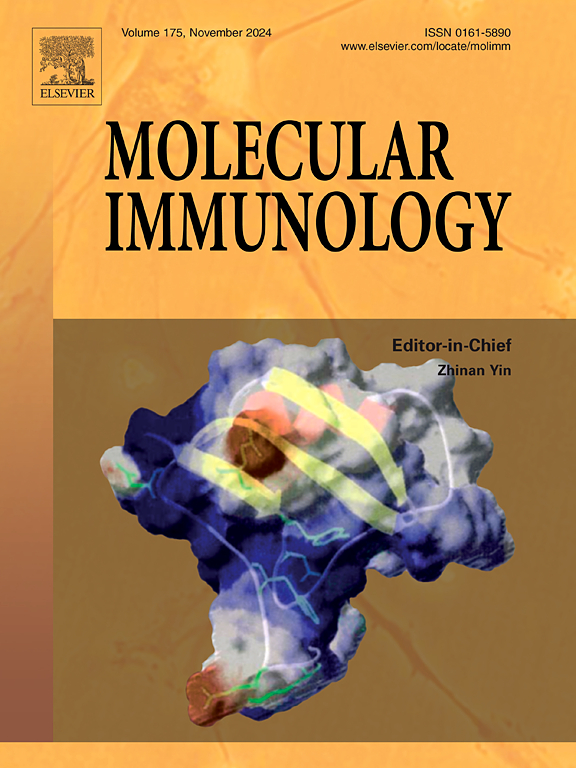Clinical characteristics and outcomes of pediatric anterior and intermediate uveitis in China
IF 3
3区 医学
Q2 BIOCHEMISTRY & MOLECULAR BIOLOGY
引用次数: 0
Abstract
Purpose
To summarize the clinical characteristics of pediatric anterior and intermediate uveitis (PAIU) and evaluate the effectiveness of vitreous cell (VC) grading and multimodal imaging techniques in the diagnosis and management of PAIU cases.
Methods
This retrospective study analyzed data on demographic characteristics, clinical features, treatment methods, and responses. Imaging tests included optical coherence tomography (OCT) and ultra-widefield fluorescein angiography (UWFFA) to assess retinal thickness, peripheral vascular leakage (PVL), and other inflammatory indicators.
Results
Eighty-eight PAIU cases accounted for 23 % of pediatric uveitis (median age at onset: 10.5 years (Range 1.0–16.0); 90.9 % bilateral, 96.6 % idiopathic). Initial symptoms included eye redness (74.4 %), blurred vision (27.5 %), pain (23.8 %), and photophobia (21.3 %), but 20.6 % were asymptomatic. Initial evaluations revealed active anterior chamber cell (ACC) and mild VC. UWFFA revealed diffuse PVL in 76.2 % of patients and limited PVL in 23.8 %. OCT revealed a significant positive correlation between retinal thickness and ACC or VC grading (P < 0.05). Compared to OCT, VC grading demonstrates greater sensitivity to disease progression during late-stage follow-up. Most eyes (87.7 %) achieved inflammation control with median treatment of 3.3 months (Interquartile range 1.2–6.2), short referral time and initial methotrexate use being independent prognostic factors. However, 32.2 % of eyes experienced the first recurrent episode during a median follow-up of 15.3 months (Interquartile range, 5.7–23.8); long referral time was an independent prognostic factor for relapse.
Conclusion
Patients with PAIU present with inflammation involving both anterior segment, vitreous and peripheral retina and need systemic treatment. Monitoring of VC, macular edema, and PVL using multimodal imaging techniques are crucial for early diagnosing and long-term management of PAIU.
中国儿童前、中期葡萄膜炎的临床特点及预后
目的总结小儿前中期葡萄膜炎(PAIU)的临床特点,评价玻璃体细胞(VC)分级及多模态成像技术在诊断和治疗PAIU中的应用价值。方法回顾性分析患者的人口学特征、临床特点、治疗方法及疗效。影像学检查包括光学相干断层扫描(OCT)和超宽视场荧光素血管造影(UWFFA),以评估视网膜厚度、外周血管渗漏(PVL)和其他炎症指标。结果88例PAIU患儿占小儿葡萄膜炎的23. %(中位发病年龄:10.5岁(1.0 ~ 16.0);90.9 %双侧,96.6 %特发性)。最初的症状包括眼睛发红(74.4% %)、视力模糊(27.5% %)、疼痛(23.8% %)和畏光(21.3% %),但20.6% %无症状。初步检查显示活跃的前房细胞(ACC)和轻度VC。UWFFA显示弥漫性PVL为76.2% %,局限性PVL为23.8% %。OCT显示视网膜厚度与ACC或VC分级呈正相关(P <; 0.05)。与OCT相比,VC分级在后期随访中对疾病进展更敏感。大多数眼睛(87.7 %)在中位治疗3.3个月(四分位数范围1.2-6.2)时达到炎症控制,转诊时间短和最初使用甲氨蝶呤是独立的预后因素。然而,32.2% %的眼睛在15.3个月的中位随访期间经历了第一次复发(四分位数范围,5.7-23.8);转诊时间长是复发的独立预后因素。结论PAIU患者表现为视网膜前段、玻璃体及周围视网膜均有炎症,需要全身治疗。使用多模态成像技术监测VC、黄斑水肿和PVL对于早期诊断和长期治疗PAIU至关重要。
本文章由计算机程序翻译,如有差异,请以英文原文为准。
求助全文
约1分钟内获得全文
求助全文
来源期刊

Molecular immunology
医学-免疫学
CiteScore
6.90
自引率
2.80%
发文量
324
审稿时长
50 days
期刊介绍:
Molecular Immunology publishes original articles, reviews and commentaries on all areas of immunology, with a particular focus on description of cellular, biochemical or genetic mechanisms underlying immunological phenomena. Studies on all model organisms, from invertebrates to humans, are suitable. Examples include, but are not restricted to:
Infection, autoimmunity, transplantation, immunodeficiencies, inflammation and tumor immunology
Mechanisms of induction, regulation and termination of innate and adaptive immunity
Intercellular communication, cooperation and regulation
Intracellular mechanisms of immunity (endocytosis, protein trafficking, pathogen recognition, antigen presentation, etc)
Mechanisms of action of the cells and molecules of the immune system
Structural analysis
Development of the immune system
Comparative immunology and evolution of the immune system
"Omics" studies and bioinformatics
Vaccines, biotechnology and therapeutic manipulation of the immune system (therapeutic antibodies, cytokines, cellular therapies, etc)
Technical developments.
 求助内容:
求助内容: 应助结果提醒方式:
应助结果提醒方式:


